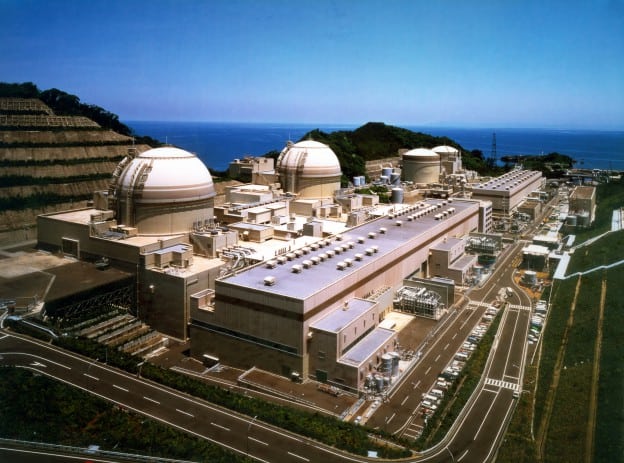
Japan’s Prime Minister Fumio Kishida has called for up to nine nuclear plants to be put into operation to mitigate tight supplies expected this winter. The country could meanwhile resume operation of more than 10 thermal power plants to ensure electricity security this summer, he said.
Kishida’s comments at a press conference on July 14 come as the nation grapples with a summer power crunch. Earlier this summer, the Japanese government issued an “electricity shortage alert” for the first time under a new system as parts of the nation, including Tokyo, Saitama, Tochigi, and Ibaraki prefectures, suffered record-high heat.
Security of country’s power supplies has been compounded by the slow startup of its nuclear power plants, which were shut down after the March 2011 Fukushima disaster, as well as retirements of aging thermal plants for environmental reasons. So far, only 10 of Japan’s 33 reactors are operating. Another seven have been cleared by the nation’s nuclear regulator.
The country is meanwhile suffering a surge in fuel prices, which stems from tight markets in the wake of Russia’s invasion of Ukraine. Gas power has become Japan’s dominant power resource since 2009, making up about 40% of its current generation mix.
Kishida on Thursday said the government is concerned about a power shortage this winter. “We must prevent this situation,” he said.
Restarting up to nine nuclear plants would secure about 10% of Japan’s total electricity consumption, and provide much-needed power for peak hours, he said. Securing an additional 10 units of thermal power generation could help grid operators achieve “a level that can realize a stable supply,” he said.
At least one power generator, JERA, has drawn up plans to address the surge in demand over the summer season, which spans from July to September. “In light of expectations for an extremely tight electricity supply-demand situation this summer, the government decided, at a 7 July meeting to review electricity supply-demand, to take comprehensive measures to address electricity supply-demand in FY 2022,” JERA said on June 27. “JERA received a written request from the METI that same day to consider and take all measures to stabilize electricity supply-demand.”
The company said that it would move forward with preparations to resume operations at its gas-fired 600-MW Anegasaki Thermal Power Station Unit 5 at Ichihara, Chiba Prefecture. It will also resume operations at the Chita Thermal Power Station Unit 5 in Chita, Aichi Prefecture. JERA had planned to shut down both units, but it successfully bid the units in a public auction for additional power supply capacity conducted by some of the nation’s transmission and distribution companies.
In addition, JERA plans to start up two new power units in August: the 1-GW coal-fired Taketoyo Thermal Power Station Unit 5 in Aichi Prefecture, and the 650-MW gas-fired Anegasaki Thermal Power Station Unit 1 in Chiba Prefecture. Anegasaki Unit 1 was slated to begin commercial operations after February 2023.
JERA said it has also embarked on ensuring its existing fleet performs reliably. While it will avoid, where possible, scheduling thermal power plant repairs and inspections for the summer, it will also “mitigate the risk of power generation facility outages through soundness checks and targeted patrols of boilers and other priority equipment,” it said.
However, many uncertainties remain, JERA said. “The energy situation is challenging due to Russia’s invasion of Ukraine and remains highly unpredictable, with increased energy procurement competition as countries seek to divest themselves from Russian supplies and rising prices for [liquefied natural gas] and other fuels,” it said.
—Sonal Patel is a POWER senior associate editor (@sonalcpatel, @POWERmagazine).
The post JERA Readying to Start 1-GW Coal Plant as Japan Scrambles to Secure Power Supplies appeared first on POWER Magazine.